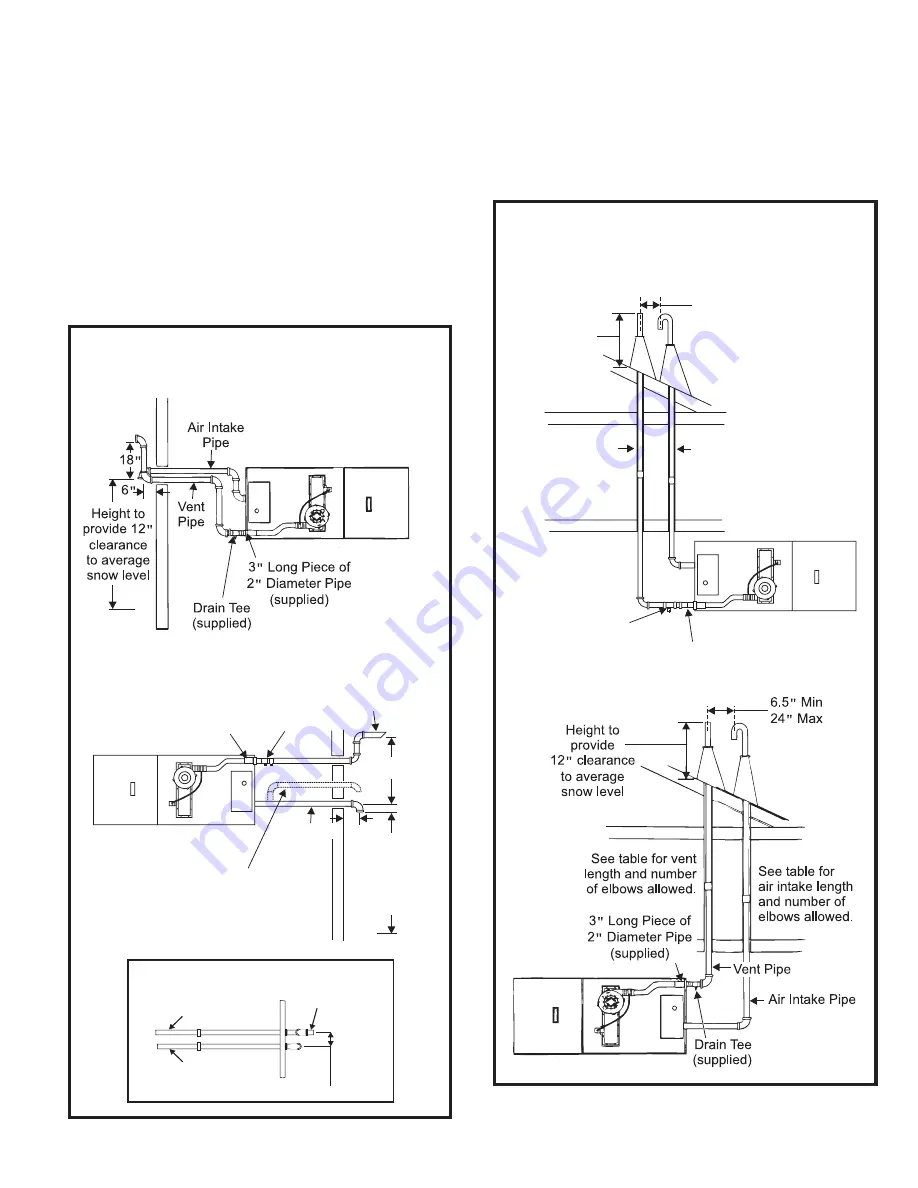
# 47904K005
Page 13
these areas, moisture in the flue gases may condense and
freeze on the air intake if this height is reduced. In milder
climates, this may be reduced to a minimum of 6". Height
may be increased as needed provided the total length of
pipe to furnace is not exceeded.
For horizontal venting, refer to Figure 11. For vertical
venting, refer to Figure 12. It is permissible to run the vent
vertically through the roof and terminate it as shown in
Figure 12, and to run the combustion air intake pipe
horizontally through a side wall and terminate as shown in
Figure 11. The vent pipe on horizontal runs must slope
upward, away from the furnace, at a minimum pitch of 1/4"
per foot of run, to prevent accumulation of condensate.
Do not cement air intake into the connector on burner
box. Use high temperature RTV silicone sealant so
intake pipe can be removed if service is required.
In horizontal venting applications, the vent and air
intake pipe must be installed on the same side of the
house within the parameters shown in Figure 11.
Horizontal Direct Vent –
Horizontal Venting
Figure 11
3 Long Piece of
2 Diameter Pipe
(supplied)
"
"
18
"
6
"
Drain Tee
(supplied)
Height to
provide 12
clearance
to average
snow level
"
Vent
Pipe
Air Intake
Pipe
Intake may be raised as
shown to obtain minimum snow
clearance requirements.
Airflow Left to Right
Airflow Right to Left
THIS PIECE
IS OPTIONAL.
INTAKE PIPE
FLUE PIPE
3” MIN. - 48” MAX.
Overhead View
Figure 12
Horizontal Direct Vent –
Vertical Venting
Height to
provide 12
clearance
to average
snow level
"
Drain Tee
(supplied)
3 Long Piece of 2 Diameter Pipe
(supplied)
"
"
6.5 Min
24 Max
"
"
Vent Pipe
Air Intake Pipe
See table for air intake
length and number of
elbows allowed.
See table for vent
length and number
of elbows allowed.
Airflow Right to Left
Airflow Left to Right














































